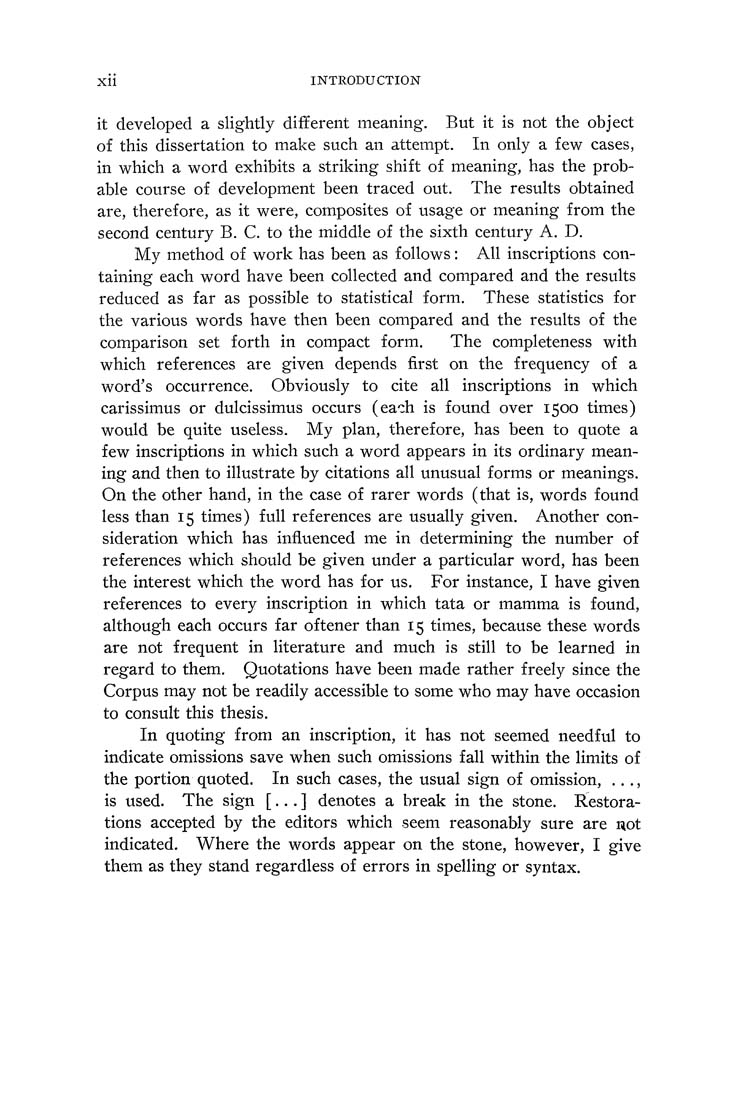Xll INTRODUCTION
it developed a slightly different meaning. But it is not the object
of this dissertation to make such an attempt. In only a few cases,
in which a word exhibits a striking shift of meaning, has the prob¬
able course of development been traced out. The results obtained
are, therefore, as it were, composites of usage or meaning from the
second century B. C. to the middle of the sixth century A. D.
My method of work has been as follows: All inscriptions con¬
taining each word have been collected and compared and the results
reduced as far as possible to statistical form. These statistics for
the various words have then been compared and the results of the
comparison set forth in compact form. The completeness with
which references are given depends first on the frequency of a
word's occurrence. Obviously to cite all inscriptions in which
carissimus or dulcissimus occurs (each is found over 1500 times)
would be quite useless. My plan, therefore, has been to quote a
few inscriptions in which such a word appears in its ordinary mean¬
ing and then to illustrate by citations all unusual forms or meanings.
On the other hand, in the case of rarer words (that is, words found
less than 15 times) full references are usually given. Another con¬
sideration which has influenced me in determining the number of
references which should be given under a particular word, has been
the interest which the word has for us. For instance, I have given
references to every inscription in which tata or mamma is found,
although each occurs far oftener than 15 times, because these words
are not frequent in literature and much is still to be learned in
regard to them. Quotations have been made rather freely since the
Corpus may not be readily accessible to some who may have occasion
to consult this thesis.
In quoting from an inscription, it has not seemed needful to
indicate omissions save when such omissions fall within the limits of
the portion quoted. In such cases, the usual sign of omission, ...,
is used. The sign [... ] denotes a break in the stone. Restora¬
tions accepted by the editors which seem reasonably sure are uot
indicated. Where the words appear on the stone, however, I give
them as they stand regardless of errors in spelling or syntax.
|








